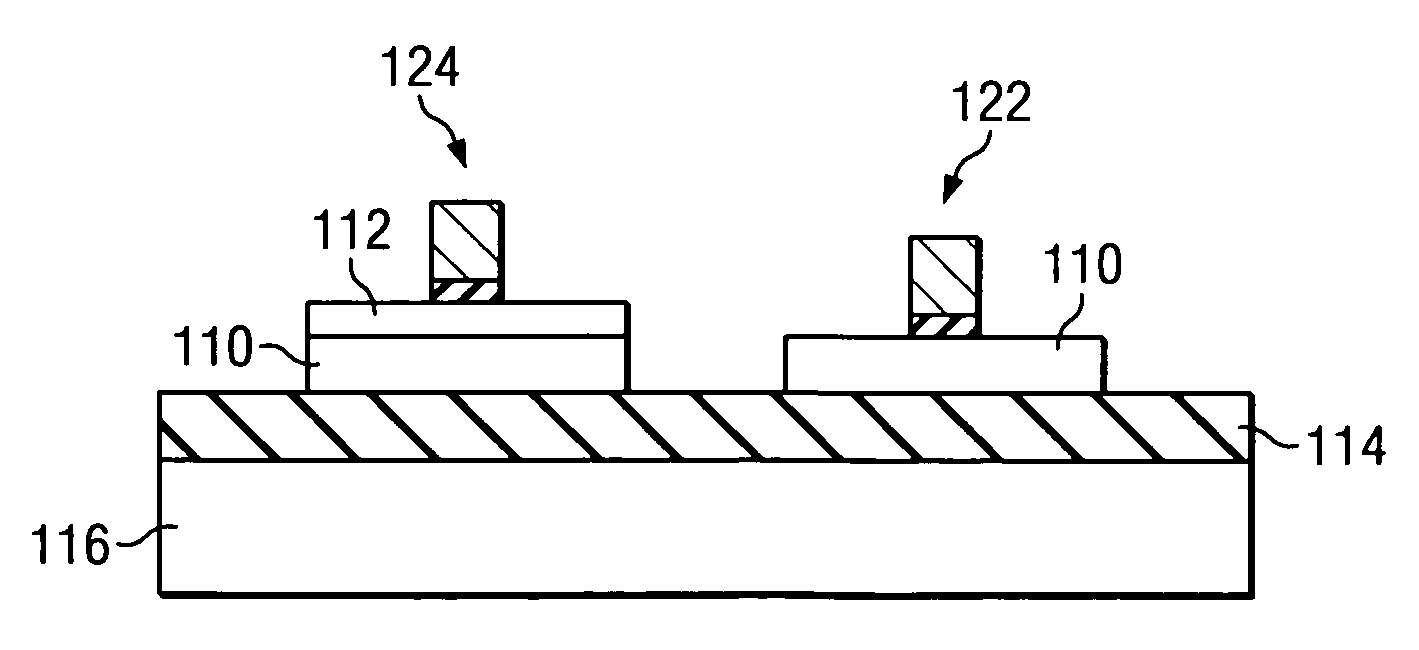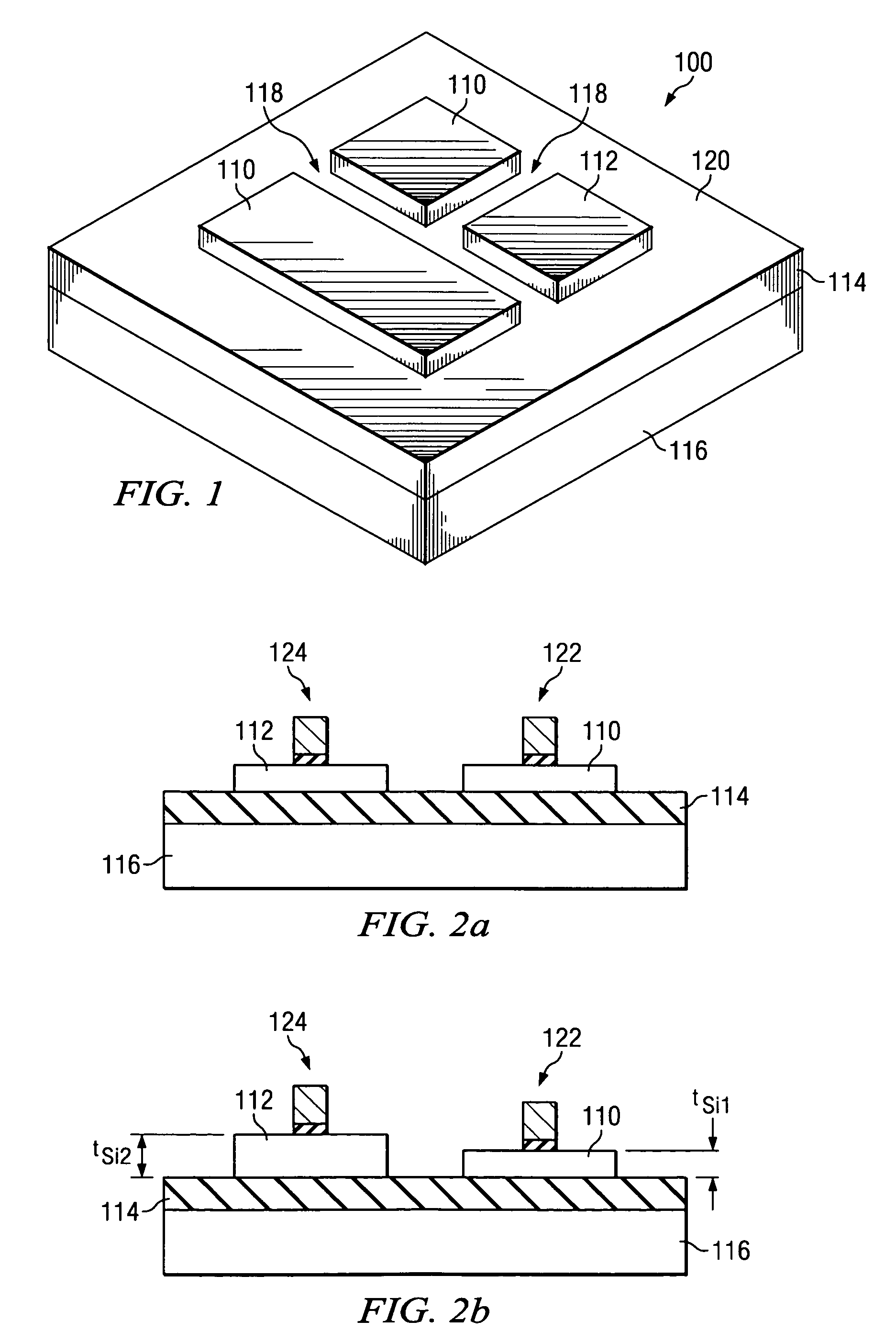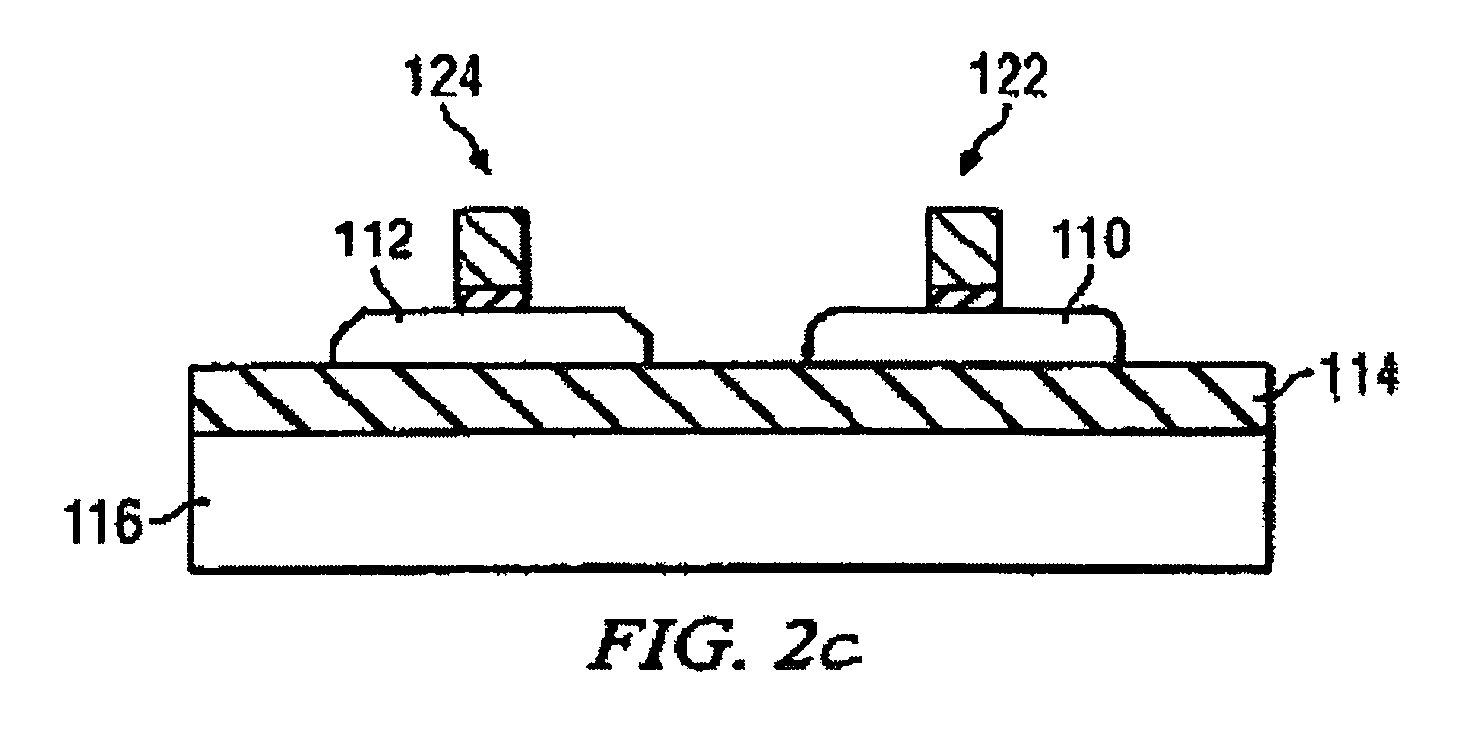Silicon-on-insulator chip with multiple crystal orientations
a technology of silicon-on-insulator chip and crystal orientation, which is applied in the direction of semiconductor devices, electrical equipment, basic electric elements, etc., can solve the problems of significant challenges and achieve the effect of enhancing the performance of n-channel and p-channel transistors
- Summary
- Abstract
- Description
- Claims
- Application Information
AI Technical Summary
Benefits of technology
Problems solved by technology
Method used
Image
Examples
first embodiment
[0042]The first embodiment method will now be described with respect to FIGS. 4a-4e. As shown in FIG. 4a, a silicon-on-insulator wafer 102 is provided where the crystalline silicon layer 130 has a first crystal orientation (h k l). Therefore, the surface of the silicon layer is of the (h k l) crystal orientation. Such a silicon-on-insulator 102 wafer may be formed by a wafer bonding and wafer separation technique, or by an oxygen implantation (SIMOX) technique, as examples.
[0043]Selected portions 134 of the silicon layer 130 are amorphosized, i.e., transformed to the amorphous state. This transformation can be performed by masking the wafer 102, opening the mask 132 at the selected portions 134 of the silicon layer 130 to be amorphosized, and implanting ions 136 into the selected portions 134 of the silicon layer 130 to create an amorphous region as shown in FIG. 4b. The ion implantation can be done by conventional ion implantation techniques such as beam-line ion implantation or pl...
second embodiment
[0048]FIGS. 5a-5f show a second embodiment method of the present invention. A silicon-on-insulator wafer 104 is provided as shown in FIG. 5a. The silicon layer in FIG. 5a includes at least two layers 148 and 150 of silicon with different crystal orientations. As shown in FIG. 5, a topmost silicon layer 148 with the (h k l) crystal orientation overlies a silicon layer 150 with the (h′ k′ l′) crystal orientation. The thickness of the topmost silicon layer 148 may vary from about 10 angstroms to about 500 angstroms, but is preferably less than about 50 angstroms. The thickness of the silicon layer 150 may be in the range of about 10 to about 500 angstrom and is once again less than about 50 angstroms.
[0049]In one example, the topmost silicon layer 148 can be formed by a layer transfer technique, which comprises of a wafer bonding process and a wafer separation process. For example, we may begin with a silicon-on-insulator target wafer, which comprises of a (100)-oriented silicon layer ...
fifth embodiment
[0058]Referring now to FIG. 8a-8c, a fifth embodiment method is discussed. A silicon-on-insulator wafer 106 is provided where the crystalline silicon layer has a first crystal orientation (h k l), as shown in FIG. 8a. Referring to FIG. 8b, selected portions of the silicon layer 130 are etched to expose the crystalline surface 138 insulator 114. This can be done by masking the wafer with a mask 132, opening the mask 132 at the selected portions of the silicon layer 130 to be etched, and etching the selected portions of the silicon layer 130 by dry or wet etching.
[0059]Epitaxy is then performed to grown a silicon layer 164 with a (h′ k′ l′) crystal orientation on the exposed crystalline insulator surface. The epitaxy step can be performed before the mask 132 is removed, as shown in FIG. 8c, or after the mask 132 is removed. This step will result in a first region 166 with a (h k l) crystal orientation and a second silicon region 164 with a (h′ k′ l′) crystal orientation. Silicon islan...
PUM
 Login to View More
Login to View More Abstract
Description
Claims
Application Information
 Login to View More
Login to View More - R&D
- Intellectual Property
- Life Sciences
- Materials
- Tech Scout
- Unparalleled Data Quality
- Higher Quality Content
- 60% Fewer Hallucinations
Browse by: Latest US Patents, China's latest patents, Technical Efficacy Thesaurus, Application Domain, Technology Topic, Popular Technical Reports.
© 2025 PatSnap. All rights reserved.Legal|Privacy policy|Modern Slavery Act Transparency Statement|Sitemap|About US| Contact US: help@patsnap.com



